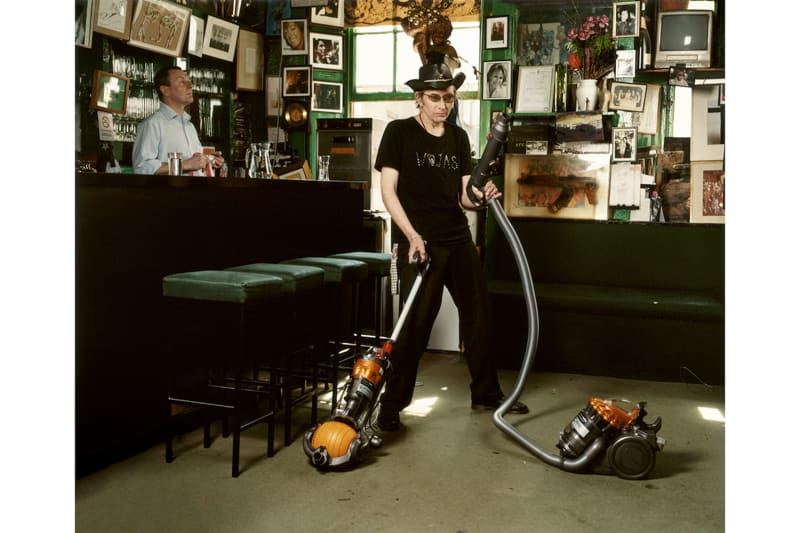Soho’s Colony Room Club – the haunt of artists, actors and chippies – is now the subject of a new show and book.
ARTIST Darren Coffield has turned detective to trace the story of the infamous Colony Room Club in Soho for a new show and book.
Darren – whose works have been displayed in places such as the National Portrait Gallery and Somerset House – was a regular at the Dean Street drinking den.
And after its closure in 2008, he came into the possession of taped interviews with some of the leading lights that made it the home to London bohemia.
Now, after transcribing the interviews, he has spent five years tracking down art and photos that graced the tobacco-stained walls – and used it as a basis for a social history of a small Georgian room whose cultural influence rippled out across decades.
“In 1998, when it was the club’s 50th anniversary, there was an attempt to interview members to mark the date,” he recalls.

Molly Parkin by Darren Coffield
Barman-turned-owner Michael Wojas decided he should capture some of the stories of the regulars that made the club so legendary, but it was an alcohol-steeped plan that never got very far.
“I tried to help Michael finish it but it got nowhere and I was left with these tapes,” says Darren.
It was the haunt of names such as Francis Bacon, George Melly, Damien Hirst, Lisa Stanfield, Colin MacInnes, Tom Baker, the spies Donald Maclean and Guy Burgess and Christine Keeler – but it was also home to those eccentrics and bohemians whose names few would remember.
The Colony came into being in 1948, though there had been a bar there since 1913.
“Because of licensing laws limiting opening hours there were 500 drinking clubs in Westminster,” says Darren.

Mick Jagger photographed by David Bailey
“There was a taxi drivers’ club and a crooks’ club, a musicians’ club, depending on what you did. That was what made the Colony different – it was a mix. You’d get actors and artists, carpenters and stage hands, show girls and intellectuals, tradesmen rubbing shoulders with bohemians.
“Bacon had unlimited credit. In the 50s he ran up a bar bill of £2,000 – enough to buy a house. But he would bring in people from all around the world – Henri Cartier-Bresson, for example.”
No one judged anyone else, adds Darren.
“There was a man who drank a lot there called Brian the Burglar,” he recalls. “Every Christmas people would give him a shopping list and he’d go to Harrods and pinch them their gifts. He once went to blow up a safe in a post office and used so much dynamite the building collapsed, leaving the safe untouched.

George Melly
“Women could feel completely safe. Muriel Belcher was a lesbian and had a black girlfriend from Jamaica. The only thing you couldn’t be was boring. That would get you thrown out. The idea was to be funny, not rich.”
Darren first walked up the narrow stairs as a an art student in 1988.
“I was at art school and at the time my friends were going to raves in fields,” he says.
“It was a bit of an old fogey thing, getting drunk in a private members’ club, but I liked the fact it seemed like a strange thing to be doing. I was interested in meeting the people there, people like Bacon. It was something different and felt like being part of living history.”
As well as stories from regulars, the book and exhibition features artworks never seen before. It includes a painting of Belcher on her death bed, and photos by Soho chronicler John Deakin.

Francis Bacon as photographed by Henry Cartier-Bresson
“I spent five years hunting things down,” Darren adds. “I found members who had taken photographs and artworks from the walls. There were so many hidden gems.”
As well being the sort of place Bacon could run up a large bar bill that he’d pay off by handing over a painting, Darren says cultural changes in British society can be traced by life at Colony.
“There was a sense that important things had happened there – it reflected the changes within society between 1948 and 2008,” he adds.
It saw scandals that changed the world: Lord Montagu and Peter Wildeblood were members who were prosecuted for a homosexual act – and it prompted Wildeblood to campaign to change the law. The Colony Room’s demise is tinged with tragedy.

Damien Hirst
Michael Wojas, who had worked there since the early 1980s, had taken it over and in 2008 he shut it down.
“The lease was running down but it could have been automatically renewed,” he says. “It wasn’t a lot of money and people were prepared to chip in. But Michael had developed a drug habit and had not been paying the bills for 18 months.
“He had run it for 27 years. Most people wouldn’t last 27 months in there.
“It was only the last few years he fell victim to his vices.”
It is now someone’s flat – and another piece of Soho’s Bohemian world has been lost to a landlord’s thirst for money – but the tales of life at the Colony live on.
